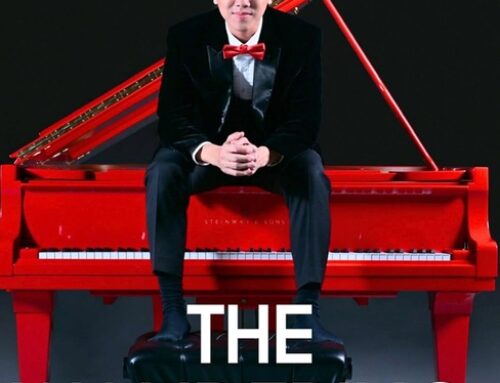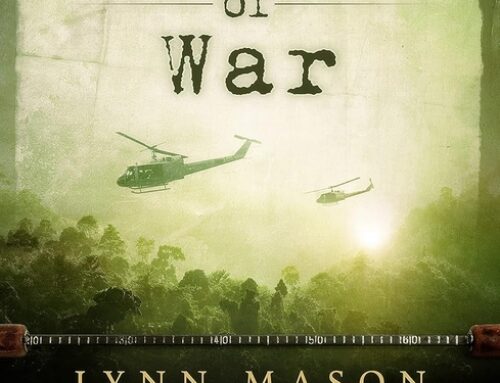 This first novel by poet and spoken-word artist Ben Burgess, Jr. chronicles the love life of Ken Ferguson, a young man who responds to being dumped by a self-centered, materialistic girlfriend by giving up on love and instead devoting himself to pursing as many meaningless sexual conquests as he can manage—and he manages quite a dance card. Ken starts out as a very nice guy, but as he tries to keep himself from feeling any emotion, seducing and bedding women becomes almost a game to him. He gradually turns into a very different sort of person, the monster in the title of the novel. It falls to Ken to understand himself and the shallow culture he has immersed himself in before he can put together the life he truly wants. Though the book starts when Ken is a college student and ends a few years later, this is in many ways a coming-of-age novel, though Ken Ferguson makes Holden Caulfield look like a choirboy.
This first novel by poet and spoken-word artist Ben Burgess, Jr. chronicles the love life of Ken Ferguson, a young man who responds to being dumped by a self-centered, materialistic girlfriend by giving up on love and instead devoting himself to pursing as many meaningless sexual conquests as he can manage—and he manages quite a dance card. Ken starts out as a very nice guy, but as he tries to keep himself from feeling any emotion, seducing and bedding women becomes almost a game to him. He gradually turns into a very different sort of person, the monster in the title of the novel. It falls to Ken to understand himself and the shallow culture he has immersed himself in before he can put together the life he truly wants. Though the book starts when Ken is a college student and ends a few years later, this is in many ways a coming-of-age novel, though Ken Ferguson makes Holden Caulfield look like a choirboy.
On the other hand, Ken is much easier to love than Rabbit Angstrom. Ken never quite becomes a total monster, and seems to stumble unintentionally into even his most heartless acts. He never totally loses his essential sweetness and vulnerability. Burgess does a very good job of developing his main character. The changes that Ken undergoes throughout the book are gradual and credible. His friends are also well-fleshed-out characters. Many of the women he dates seem to be variations of one another (I wondered at times how even Ken kept them straight), but that is, I think, an intentional portrayal of the shallow, materialistic women Ken pursues, rather than a flaw in Burgess’ storytelling. The writing is smooth and for the most part well-edited. The dialog is realistic and often witty.
The main problem with the book is that there is not enough plot to hold together the sex scenes. It is hard to imagine that graphic sex scenes could become tiring, but in this book they do. Ken Ferguson has a lot of sex and we are in chapter seven before he sleeps with someone without giving the reader a kiss-by-suck-by-thrust description of the action. At times Ken’s sexual adventures read as if he were checking off a list of options at a porn site: Getting head in car, check. Quickie in public place, check. Threesome, check. Sex with suburban women while husbands watch, check. And so on. The plot that is left when you remove the many pages of what becomes surprisingly routine sex is rather lean: Boy gets hurt, becomes an unfeeling sexual predator, learns some hard lessons, attempts to redeem himself (it is only in this last bit that we get any real sustained tension). Even the lessons Ken learns are fairly obvious: If you juggle a pack of girlfriends while trying to make each one believe she is the most important of the group, you are going to create some problems for yourself. If you use people, they will finally get enough of you. If you refuse to get attached to other people, you are going to be lonely.
The scenes in which the characters have their clothes on consist mainly of outings for bowling or clubbing or just hanging out, peppered with a great deal of immature squabbling over who is dating whom and whose heart has been broken by which cad or cadette this week. (I use the term cadette advisedly. The women—girls might be a more accurate term—in this book, with a couple of striking exceptions, tend to be more immature than the men, and less prone to deep emotion.) Readers will no doubt come to care for Ken, as I did, and young adults may enjoy the young-adult soap opera, but I for one would like to see Burgess turn his storytelling skills to a meatier plot. The book features a bonus section of Burgess’ poetry. The poems take on deeper and more interesting subjects. Perhaps Burgess’ next novel will be based on some of the themes he works in his poems.
Links
Amazon
Barnes & Noble
Facebook
Get an Editorial Review | Get Amazon Sales & Reviews | Get Edited | Publish Your Book | Enter the SPR Book Awards | Other Marketing Services






















Leave A Comment